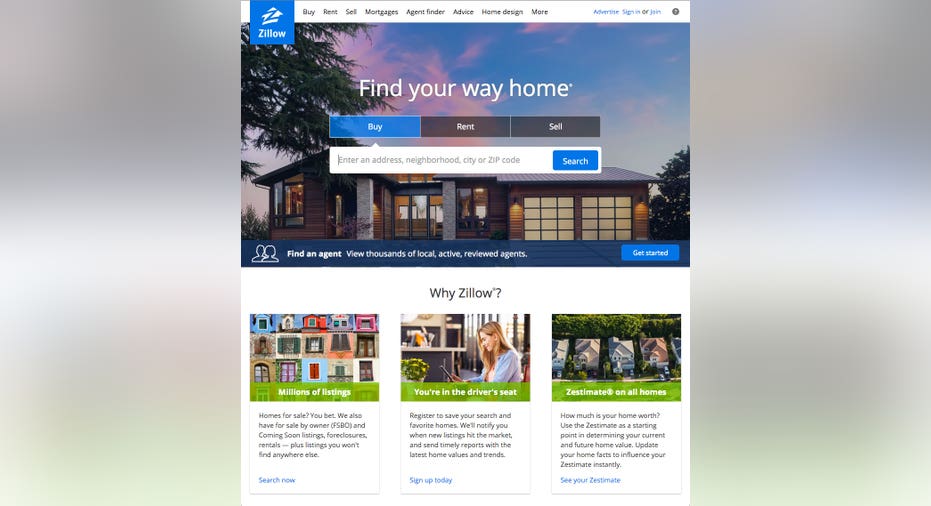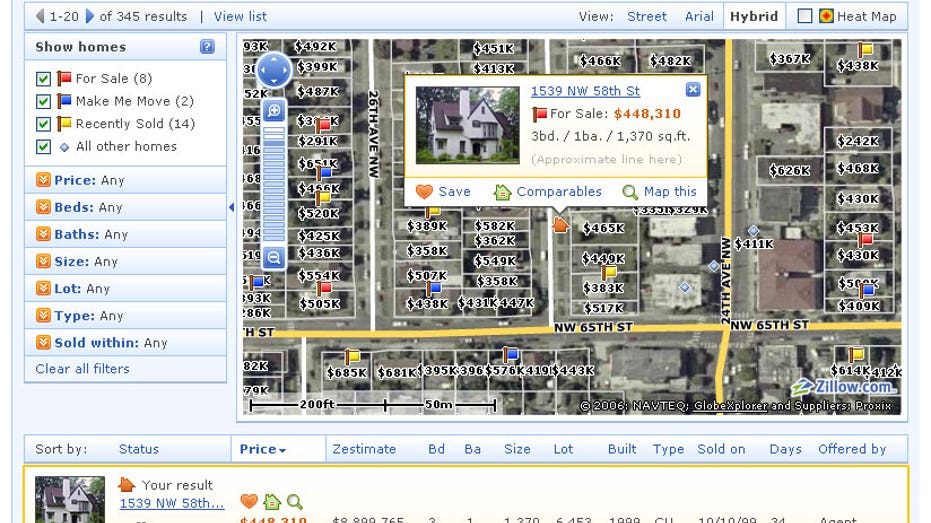Zillow: The Untold Power Struggle, Literally!

Today a leader in its industry with a market cap of more than $6 billion and well over 100 million users, just a few years ago, in 2006, the very same company had to turn off the fridge to keep the lights on.
"It was a complete surprise," said Stan Humphries, as he recalled the early days before and immediately after launching Zillow (NASDAQ:Z) and (NASDAQ:ZG). The company, however, was not in financial straits.
An Early Power Struggle
"We had computers on two ping pong tables with extension cords everywhere," recalled the Zillow executive. Humphries, and about two dozen friends and colleagues were testing the site when the electricity went out.
At first nobody could figure out what had happened. Was the site so powerful it caused an electrical surge? "We knew we broke a circuit breaker," Humphries said, but not much more.
As it turned out, the ping-pong room was also the company kitchen and someone had started the dishwasher, while the refrigerator was humming too. The power drain was too much. "We had to turn off the appliances," otherwise the small office just couldn't handle what was happening inside.
What was happening inside? Zillow.
One Moment in Time
Launched in 2006, by Rich Barton and Lloyd Frink, former Microsoft (NASDAQ:MSFT) executives, the website was started to provide people with information that had otherwise been difficult to access. The intention was to help anyone with an interest in home buying make informed real estate decisions.
"Data was locked up in industry databases," explained CEO Spencer Rascoff. "We wanted to make it accessible."
Rascoff, who was also part of the launch team, but not yet the company's chief, remembers the early days vividly. "I was filled with excitement and at the same time filled with dread."
Amy Bohutinsky wasn’t sure what to think. She left everything behind to join Zillow, moving from San Francisco to Seattle. Now the chief operating officer, Bohutinsky even left her boyfriend for the start-up. “I told him the opportunity was just too exciting. It was a feeling.”
Instinctively Bohutinsky, Rascoff and the rest of team sensed they were onto something.

A few days after that power failure, the site went live. "We had something like a million hits in the first 24 hours," Rascoff said. "I think Pokemom Go is the only launch that's attracted more hits than we did in such a short period of time."
Unfortunately, with the hits came a few bruises too. "The site crashed. That was stressful."
Secret Sauce
"Everyone wants to know what's my home worth," Rascoff said reflecting on those early days. And through proprietary software called Zestimate, Zillow was able to tell the public not only what their homes were worth - but what their neighbor's homes were worth too.
The website caught on like wildfire.
Stan Humphries, a data science engineer, was largely behind Zestimate. He had honed his skills in the private sector at companies including Expedia (NASDAQ:EXPE) as well as at NASA. In about six months, Humphries created the site's signature maps and color coded dots.
Humphries expected heavy traffic, but, as he remembers it, the site received two million hits in just a handful of days. Given the immediate interest, "We knew this was the ground floor of something big," Bohutinsky recalled.
Ultimately the team made the necessary tweaks and improvements to handle the traffic and Zillow never looked back.
How to Succeed in Business
In less than a decade, Zillow has grown from a few dozen employees working in one room to over 2,500 people at offices located on both coasts, with headquarters in Seattle.

Humphries, Rascoff and Bohutinsky all say Zillow's decision to put consumer preferences ahead of everything else was a critical part of the site's success. And they stayed true to that belief even when it involved difficult decisions. "When we decided to put real estate agent reviews on our website, that was a real milestone," Humphries said in retrospect, largely because the real estate industry was cautious.
Skeptics argued the reviews could be biased, or based on emotion or even written by people with an axe to grind.
Nonetheless, Zillow felt agent reviews reflected its mission - to make the home buying process more transparent - so they went forward. "That was a real inflection point," Humphries said. "And we were right. Today agent reviews are among the most accessed pieces of information that we make available, and agents value the feedback."
Zillow also provides other services, such as information on lenders, foreclosures, rentals as well as video walkthroughs, tips for sellers and much more.
Since 2006 Zillow has made nearly a half dozen acquisitions including Trulia in 2015. More than 156 million people visit one of the sites owned by Zillow Group in any given month.
Lessons Learned
Looking back at the success, Rascoff believes Zillow went from 0 to 156 million in under 10 years by staying nimble. "That's one of our key values and it's written on the walls of every conference room," he explained. Along with other core values, Rascoff believes business people can learn a lot from Zillow's early years, "Move fast, think and don't be afraid to make a decision."
And trust your instincts even if it involves sacrifice. Remember, that boyfriend Amy Bohutinsky left behind in San Francisco? Today they’re happily married with two kids.
"Take it from us,” Rascoff said. “We've learned in a lot, in a very short time."
Lee Brodie is a freelance writer who has been covering finance, consumer and business news for more than 20 years. A graduate of Monmouth University, he's also a playwright and script writer of documentaries.
Updated 8/19:*Zillow's employee total was updated to 2,500 from 500.



















